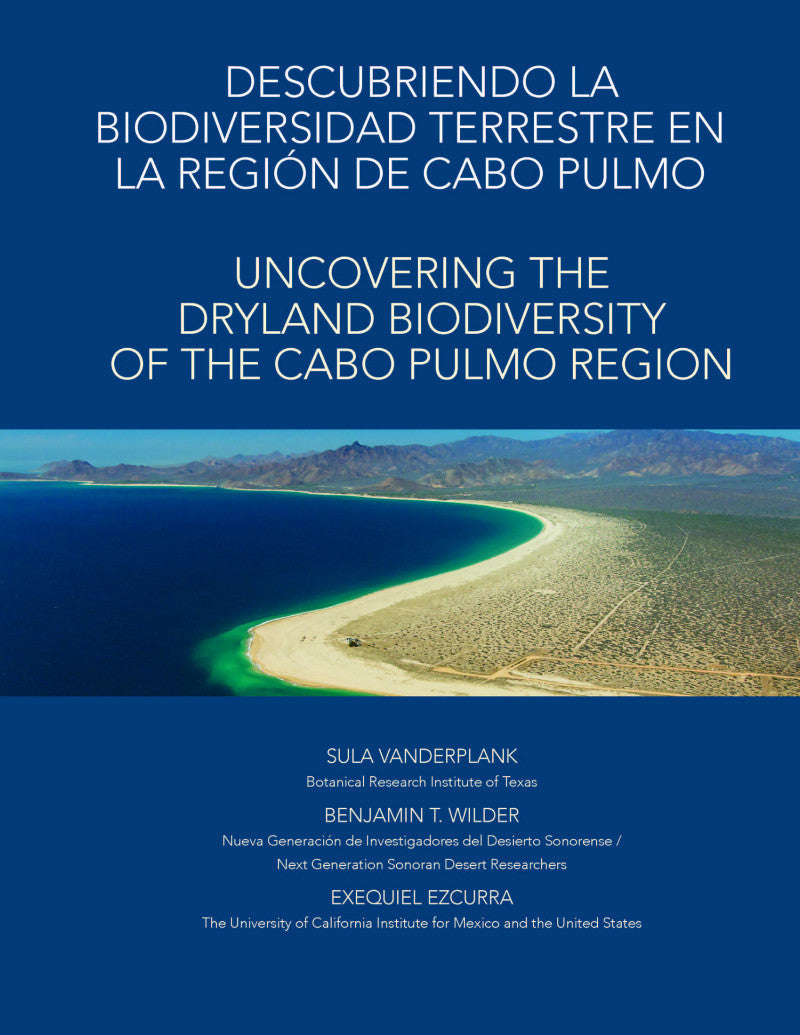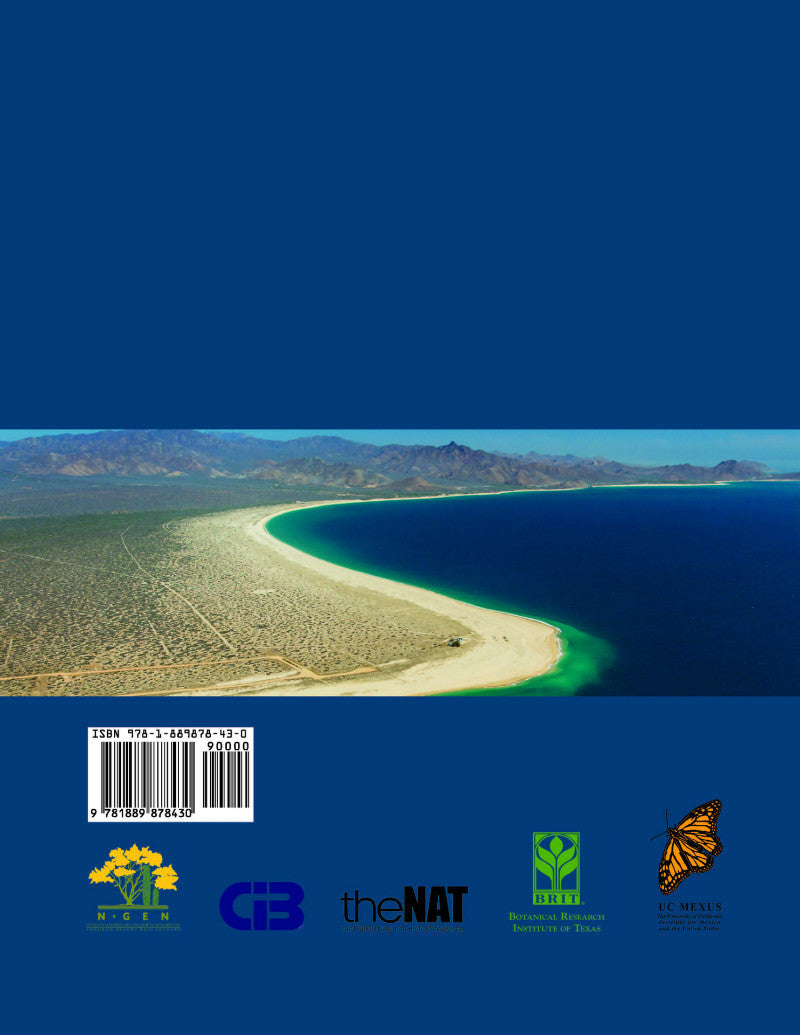Shop BRIT
Uncovering the Dryland Biodiversity of the Cabo Pulmo Region
Uncovering the Dryland Biodiversity of the Cabo Pulmo Region
Couldn't load pickup availability
Uncovering the Dryland Biodiversity of the Cabo Pulmo Region (Descubriendo la Biodiversidad Terrestre en la Región de Cabo pulmo)
Authors
Sula Vanderplank
Benjamin T. Wilder
Exequiel Ezcurra
ISBN-13: 978-1-889878-43-0
Publication date: April 2014
Specifications: 8.5"×11" (pdf), 107 pp., color photos, bibliography, appendices
About the Book
An international multi-disciplinary team of scientists published a report on the terrestrial biodiversity of the Cabo Pulmo region in Baja California Sur, Mexico. These lands were the site of a proposed mega development project. The scientists demonstrated that the desert lands adjacent to Cabo Pulmo, the singular coral reef ecosystem of the Gulf of California, harbor high levels of biodiversity, much of which is only found in this remarkable coastal setting. Their report, Uncovering the Dryland Biodiversity of the Cabo Pulmo Region, shows that the project is situated in an area of extreme conservation value, the center of which is Punta Arena, an idyllic beach setting proposed to be completely cleared to make way for 20,000+ hotel rooms.
The November 2013 survey, despite only a week in duration, documented 560 plants and animals (392 species of plants, 44 mammals, 29 reptiles, and 95 birds) on the land surrounding Cabo Pulmo, 400 more than were presented in the Manifestación de Impacto Ambiental (environmental impact statement) for the Cabo Dorado project. Among the species overlooked in the MIA are 27 plants and animals on the Mexican endangered species list (NOM-059) and 83 endemic species, those found only in this region and nowhere else in the world.
Beyond the numbers of species, the report highlights the unique and ecologically important habitats of the beautiful sand spit, Punta Arena, the core zone of the pending development proposal. The team found two regionally unique habitats formed by local-scale ocean currents that provide habitat for two micro-endemic plant species, five endemic reptiles, critical habitat for a number of waterfowl and shorebirds, and nesting Olive Ridley sea turtles.
This publication is available as a free pdf. At checkout, you will be required to enter an email and a billing address but will not be required to enter payment information. Once checkout is complete, the confirmation page should display a link to download the file. If the link does not appear immediately, please be patient. Files may take longer to download depending on connection speeds. You will also receive an email with a link to download the file.




